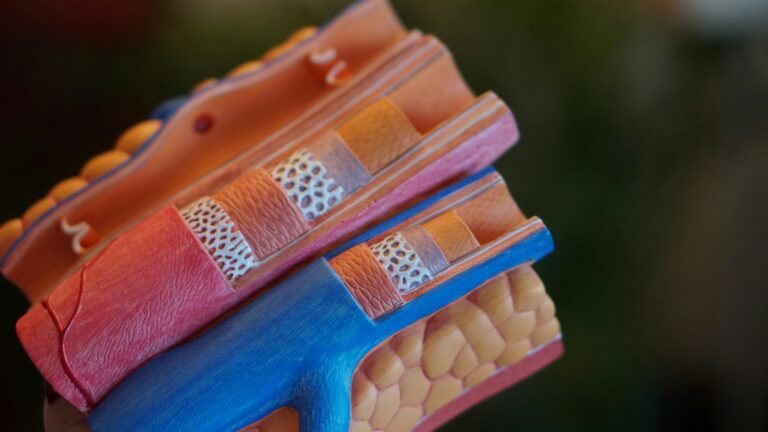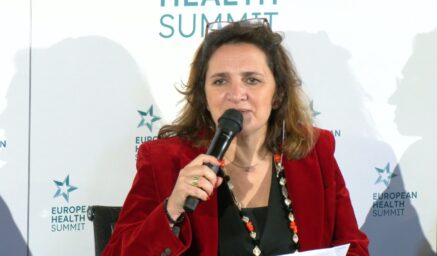The European Commission has launched a Call for Evidence for the bloc’s long-awaited EU Cardiovascular Health Plan. The consultation is open until 15 September. It will inform an EU strategy, which is to come out by the end of the year.
The Commission launched the call for evidence on 11 August. The stakes are clear: cardiovascular disease (CVD) exacts not only a human toll. It also costs the EU around €280bn each year.
Commission President Ursula von der Leyen announced the initiative in her political guidelines. It will build on initiatives such as Europe’s Beating Cancer Plan. It spans prevention, early detection and screening, treatment and management, and rehabilitation.
Shrinking Europe’s heartbreak
The call for evidence aims to reduce new CVD cases and prevent premature deaths. It focuses on people with existing conditions or risk factors such as obesity and high blood pressure. The plan will “support, coordinate and, complement national efforts. It pays particular attention to the division of competencies between the EU and the member states”.
At a meeting with the EU Structural Heart Disease Coalition, Health Commissioner Olivér Várhelyi highlighted the “unexpected strength” of the €22.6bn health envelope in the upcoming Multiannual Financial Framework. He confirmed that a broader EU healthcare package, including sufficient resources for the Cardiovascular Health Plan and the forthcoming Biotech Act, will be unveiled by year’s end.
You might be interested
CVD remains the EU’s leading cause of death, responsible for over one in three fatalities. Effective action depends on sustained, evidence-based prevention strategies, one of the plan’s three central pillars.
Prevention counts
Denmark shows what is possible. Once a poor performer on cardiovascular outcomes, the country reversed course by launching the Danish Heart Plan in the early 1990s. “Over recent decades, people in Denmark have developed better habits,” said Michael Rahbek Schmidt, consultant cardiologist and ex-president of the Danish Society of Cardiology. “We’ve seen a 50 per cent decline in smoking, we’re eating better food and doing more sports. The food industry has helped by reducing trans fats and adding more whole grain to the national diet.”
The EACH Roadmap describes prevention as a continuum. It starts with primordial prevention to inhibit the emergence of risk factors. Primary prevention helps high-risk individuals manage factors such as cholesterol and blood pressure. Secondary prevention focuses on timely screening, early detection, precision diagnosis and a European Cardiovascular Health Check.
Over recent decades, people in Denmark have developed better habits. We’ve seen a 50% decline in smoking, we’re eating better food and doing more sports. The food industry has helped by reducing trans fats and adding more whole grain to the national diet. — Michael Rahbek Schmidt, Danish cardiologist
The Cyprus Stroke Association underscored the urgency of prevention in its submission to the call for evidence. “Stroke is a major cause of death and disability in Cyprus and across the EU. In Cyprus, there are more than 2,000 new stroke cases annually. One-third of these patients die, one-third live with long-term disability, and only one-third recover fully. Alarmingly, one-third of strokes occur in people under the age of 65,” it wrote. The group urged a coordinated strategy on modifiable risk factors, scaling up public campaigns like the national AXIPPA initiative, and EU-supported mass screening for atrial fibrillation.
Early detection and screening
Prevention also remains a funding priority. The Commission says EU4Health has already invested more than €280m in NCD prevention, including cardiovascular health. The funding supports joint actions, stakeholder projects, and agreements with international bodies. Early detection can transform outcomes, improving survival rates and quality of life. The Commission proposes an EU protocol for cardiovascular health checks and guidance on digital tools for personalised treatment and remote monitoring.
This is particularly pressing for under-recognised conditions such as cardiomyopathy, which affects about one in 330 Europeans of all ages. In a written question to the Commission, several MEPs warned of “underdiagnosis, misdiagnosis and late diagnosis” and called for cardiomyopathy to be explicitly addressed in the plan.
The Cyprus Stroke Association also stressed the importance of early detection. It recommended systematic screening for atrial fibrillation in primary care and community settings, alongside digital tools and telehealth to reach rural populations.
Strong, interconnected data systems are essential. Denmark’s national patient ID system, linking health, education and income data for over 60 years, allows the country to track outcomes, monitor interventions and identify inequalities. “Databases and registries provide us with insights that help us to do more of what works,” Mr Schmidt noted.
Management, care, and rehabilitation
The plan’s third pillar focuses on optimising management, care, and rehabilitation. The EACH Roadmap calls for early intervention, universal access to personalised, high-quality healthcare, greater public awareness of CVD symptoms and precision medicine grounded in translational research.
The CVH Plan should support integrated stroke pathways covering acute management, early supported discharge, rehabilitation and long-term follow-up. — Cyprus Stroke Association
Denmark, with its strong scientific ecosystem and industry collaboration, aims to lead. Yet Schmidt warned of a slowdown in innovation: “Of the 114 new medicines approved by the European Medicines Agency last year, five were for CVD and only three had a new active substance.”
Rehabilitation, often overlooked, is gaining priority. Denmark has modernised services to improve patients’ quality of life. The roadmap proposes a network of experts to define rehabilitation standards, remove barriers to access and expand digital health support, building on the Stroke Action Plan for Europe.
In Cyprus, stroke care illustrates the challenge. While acute treatment has improved, long-term services remain fragmented. “The CVH Plan should support integrated stroke pathways covering acute management, early supported discharge, rehabilitation and long-term follow-up,” the Stroke Association argued. It called for EU investment in allied health professionals, including speech and language therapists, physiotherapists and occupational therapists,to meet growing needs.
Harnessing emerging technologies
Emerging technologies will be integral to the EU plan. Digital health tools, artificial intelligence (AI) and virtual human twins are expected to reshape prevention, diagnosis, and treatment. The plan will benefit from the opportunities offered by the European Health Data Space to “shift from reactive to predictive and personalised cardiovascular care”.
The Commission will also use the AI Act and forthcoming “Apply AI” strategy to position cardiovascular health as a testbed for scaling trustworthy AI in NCD care. The plan will tackle systemic gaps and inequities. In line with the EU Strategy for Life Sciences, it will address research and innovation shortfalls, integrate a gender-sensitive approach and ensure the inclusion of marginalised groups. It will align with the EU Vision for Agriculture and Food, recognising the role of nutrition in cardiovascular health.
Supporting national strategies will be key. Mapping Member State prevention plans could identify gaps, harmonise best practices and strengthen rehabilitation pathways.
Closing gaps and fostering inclusion
Romania offers a recent example. It recently adopted its first National Strategy to Combat Cardiovascular and Cerebrovascular Diseases 2025–2030. The plan aims to cut preventable deaths and disabilities from the country’s top killers through integrated care pathways. Targets include equipping 80 per cent of county hospitals with cardiology services, creating 20 community care centres, modernising rehabilitation facilities and cutting emergency transport times by 20 per cent. Romania also plans to expand specialist capacity, invest in digital health tools and establish a national high vascular risk registry.











